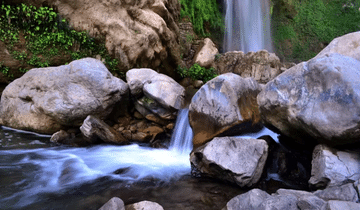According to the Hindu mythology, Adi Kailash is the abode of Lord Shiva, his consort Parvati and their offspring Ganpati and Kartikey. Therefore, the spectacular Adi Kailash mountain range is considered as the most sacred mountain range in the world and is worshiped by many Hindus for its religious importance.
Adi Kailash is popularly known as Chhota Kailash. Being a replica of Mt. Kailash in Tibet within the Indian territory, Adi Kailash is immensely popular among devotees of Shiva.
Situated at a fairly impressive altitude of 6,310 metres, Adi Kailash also referred to as Chota Kailash or Little Kailash is in one or the other way a replica of Mount Kailash in Tibet.
It is situated in the Indian Territory in Pithoragarh district of Uttarakhand within a proximity to the Indo-Tibetan border. In the quietude of the tranquil Kumaon Himalayas, Adi Kailash is a popular pilgrimage of the Hindu devotees.
One can catch a glimpse of the emerald Parvati lake and the Gauri Kund adorned on the very foot of Chota Kailash.




